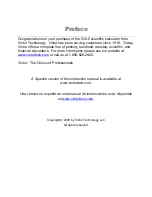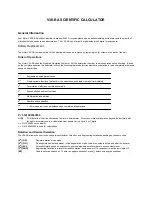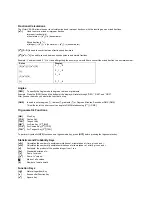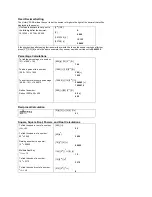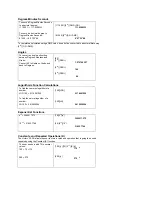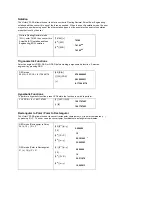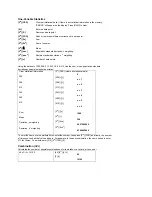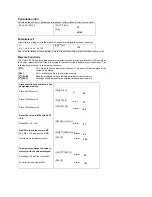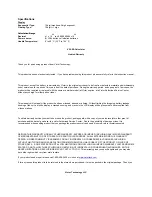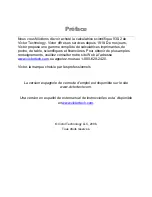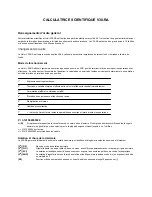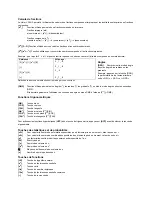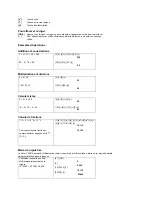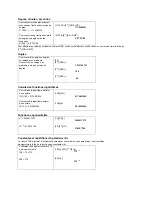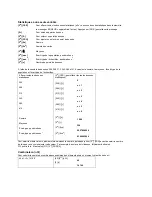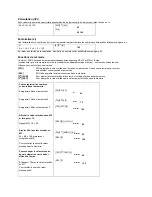
One-Variable Statistics
[2
nd
] [CSR]
Clears all statistical data. (If there is no statistical information in the memory,
“ERROR” will appear on the display. Press [ON/C] to clear.
[
Σ
+]
Enters a data point.
[2
nd
] [
Σ
-]
Removes a data point.
[2
nd
] [FRQ]
Adds or removes multiple occurrences of a data point.
[2
nd
] [
Σ
x]
Sum
[2
nd
] [
Σ
x
2
]
Sum of squares.
[2
nd
] [
ξ
]
Mean
[2
nd
] [
σ
xn]
Population standard deviation, n weighting.
[2
nd
] [
σ
xn
-1
]
Sample standard deviation, n
-1
weighting.
[2
nd
] [n]
Number of data points.
Using the data set of 250, 268, 313, 342, 380, & 415, find the sum, mean, population standard
deviation and sample standard deviation.
Clear statistical information
250
268
313
342
380
415
Sum
Mean
Deviation, n weighting
Deviation, n
-1
weighting
[2
nd
] [CSR] (clears all statistical data)
0
[250] [
∑
+]
n = 1
[268] [
∑
+]
n = 2
[313] [
∑
+]
n = 3
[342] [
∑
+]
n = 4
[380] [
∑
+]
n = 5
[415] [
∑
+]
n = 6
[2
nd
] [
∑
x]
1968
[2
nd
] [
ξ
]
328
[2
nd
] [
δ
xn]
58.27806906
[2
nd
] [
δ
xn
-1
]
63.84042606
To enter the same n value multiple times, enter the number, then press [2
nd
] [FRQ], and finally, the number
of times you needed that value added in. For example, in the above calculation, the user needed to enter
313 four times. You would enter [313] [2
nd
] [FRQ] [4].
Combination (nCr)
Calculates the number of possible combinations of n items taken r at a time, given n and r.
45 nCr 3 = 14190
[45] [2
nd
] [nCr]
45
[3] [=]
14190


